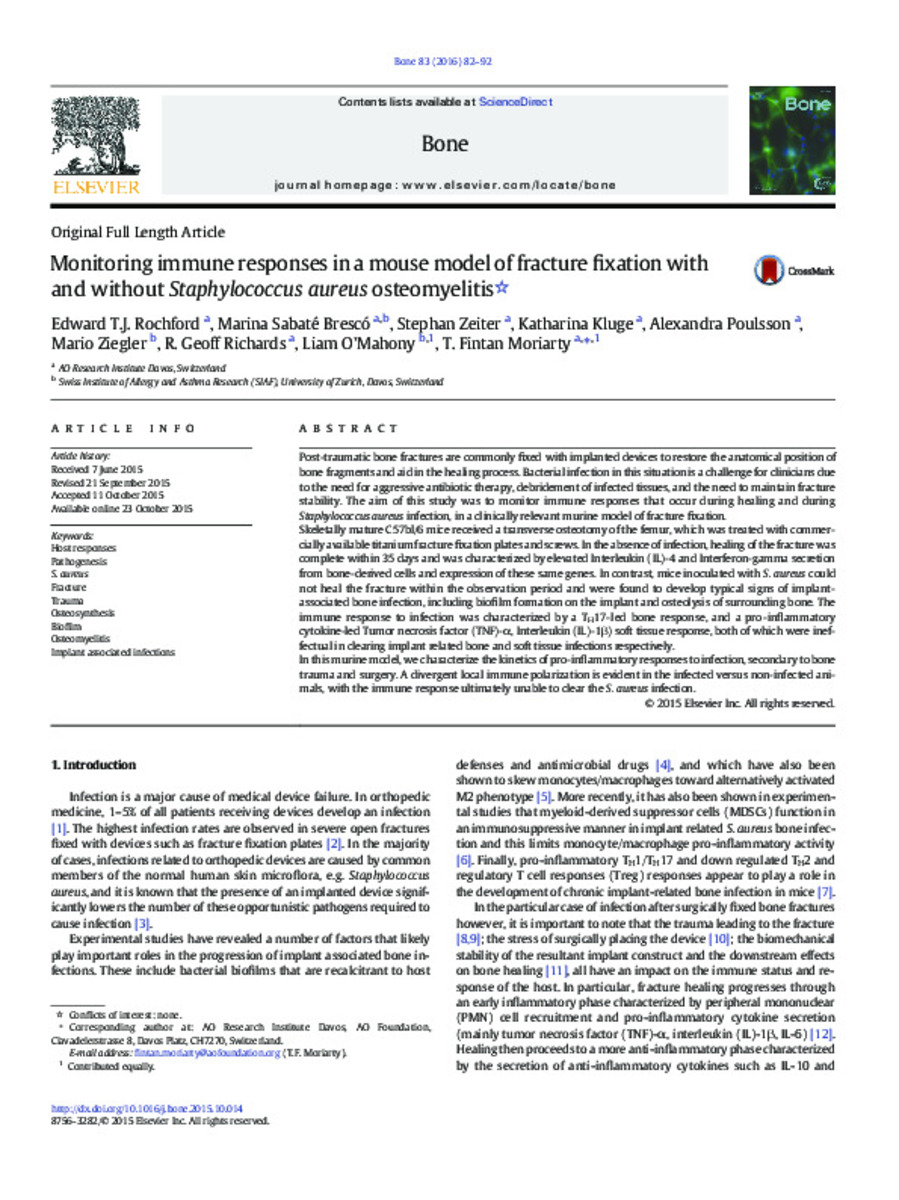Monitoring immune responses in a mouse model of fracture fixation with and without Staphylococcus aureus osteomyelitis
Keywords:
Host responses
Pathogenesis
S. aureus
Fracture
Trauma
Osteosynthesis
Biofilm
Osteomyelitis
Implant associated infections
Editorial note:
© 2015 Elsevier Inc. All rights reserved
Citation:
Sabaté-Brescó, M. (Marina); Rochford, E. T. J. (Edward Thomas James); Zeiter, S. (Stephan); et al. "Monitoring immune responses in a mouse model of fracture fixation with and without Staphylococcus aureus osteomyelitis". Bone. 83, 2016, 82 - 92
Statistics and impact
0 citas en

0 citas en

Items in Dadun are protected by copyright, with all rights reserved, unless otherwise indicated.







